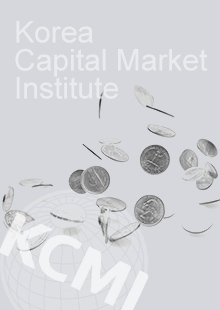Find out more about our latest publications

An Analysis of Disparity between Ownership and Control in Korean Business Groups
Research Papers 07-03 Feb. 04, 2008
- Research Topic Corporate Finance
- No other publications.
- No other publications.
“Controlling minority shareholder” is a shareholder who owns only a small fraction of a firm`s total shares but exerts almost complete control over important decisions of the firm. The existence of a controlling minority shareholder means that there is a disparity between the right on the firm`s cash flow (that is, ownership) and the control right.And disparity (not separation) between ownership and control is observed most conspicuously in business groups such as Korea`s chaebols, and generated through pyramid-type and/or cross shareholding among family firms of a group.
This report deals with two important empirical issues related to the disparity between ownership and control.The first issue is the measurement of the degree of disparity.It is relatively straightforward to measure the magnitude of a controlling minority shareholder`s ownership over family firms of the business group.But measuring the magnitude of her control right over family firms is much more complex and subject to much debate in academic papers.We analyze two methods for control right measurement, one is based on the concept of “internal equity” and the other is based on the concept of “weakest link”.The former is currently employed by Korea`s Fair Trade Act and is used in many academic research in Korea, but has a problem of internal inconsistency.The latter is “critical control threshold” proposed by Almeida et al.(2007) and can be regarded as a generalization of the weakest link into cross shareholding among family firms.We measure the degree of disparity for Korea`s major business groups using both methods and find that the degree of disparity can be drastically different according to measurement method.Especially, while increase of cross shareholding among family firms always increases the degree of disparity measured with the inside equity concept, there is no such monotone relationship between cross shareholding and the degree of disparity measured with the critical control threshold method.
The second issue is about the effect of disparity between ownership and control on firm performance and value.Disparity between ownership and control suggests that the agency problem between the controlling (minority) shareholder and other non-controlling shareholders should be severe and that this agency problem should have a negative effect on firm performance and value.We estimate panel data models for Korea`s major business groups and find no evidence that disparity between ownership and control has statistically significant effects on firm performance and value.
The results of this report suggest that the measurement problem of control right should first be cleared in order to utilize disparity between ownership and control as a policy tool on business groups.